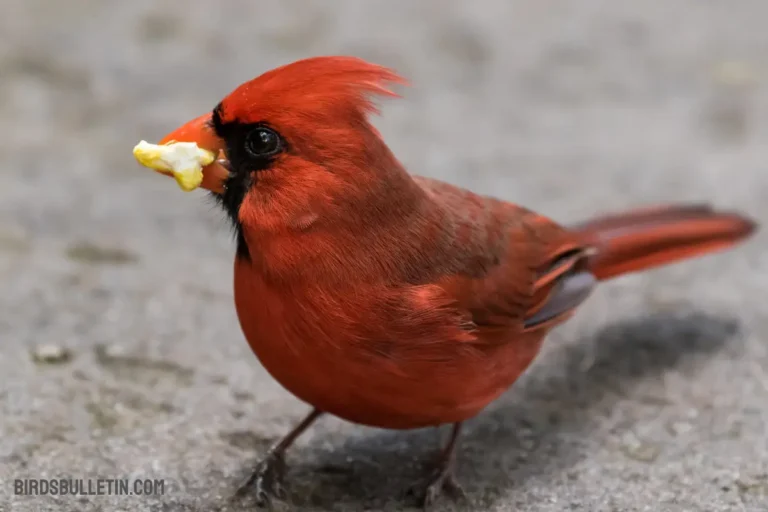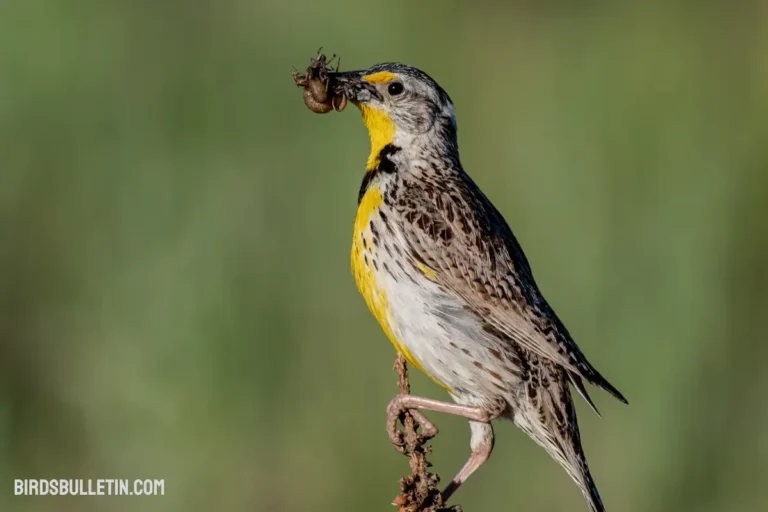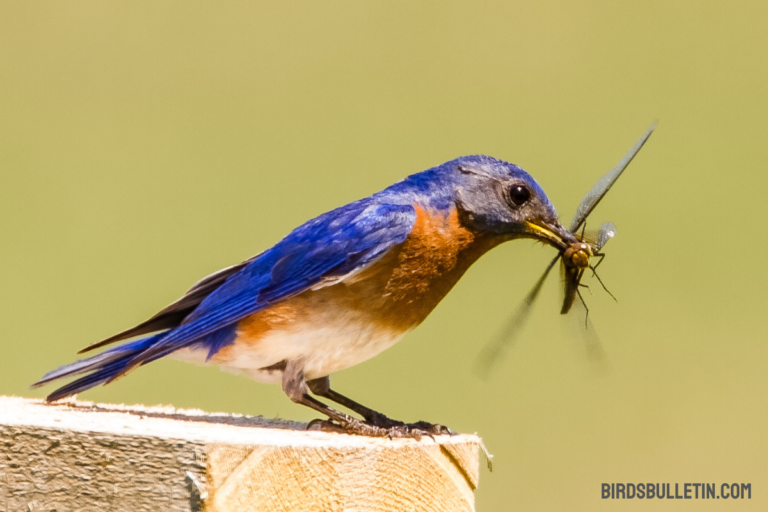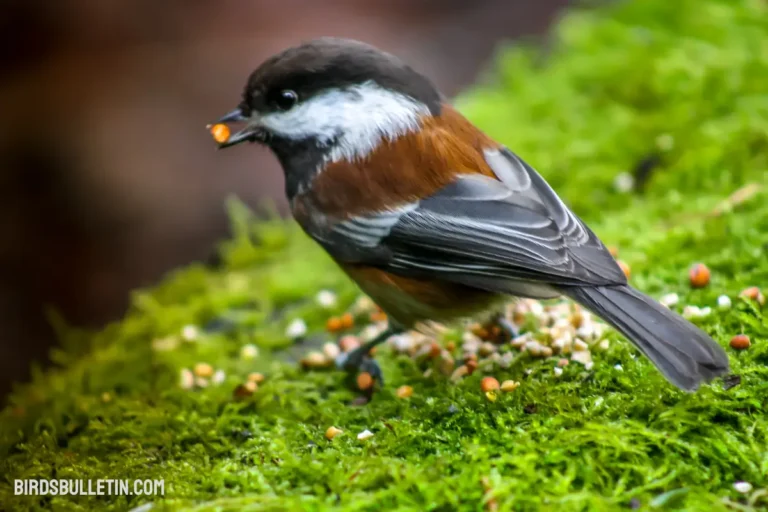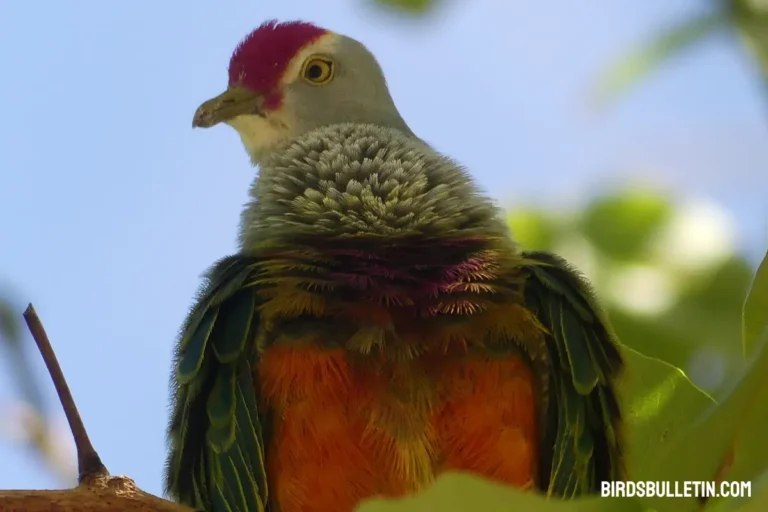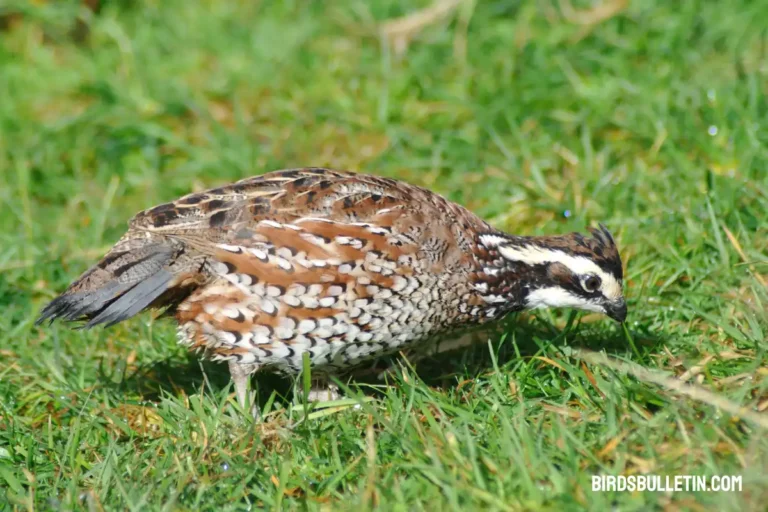What Do Bananaquits Eat?
With their bright yellow plumage and acrobatic feeding styles, bananaquits are aptly named little tropical birds. Also called sugarbirds, they thrive on the nectar found in their island habitats across the Caribbean and parts of Central and South America.
But blossom nectar alone does not sustain them. Like all hummingbirds and sunbirds, bananaquits supplement sugary drinks with protein sources. The tiny bananaquit employs an expansive foraging repertoire to exploit food across all vertical levels of its habitat from canopy to ground level.
An opportunistic generalist, it taps the bounty of the tropics year-round, darting between ornate blossoms or gleaning along leaf edges with equal enthusiasm. Its dietary flexibility contributes to the bananaquit’s abundance across its resident range.
Want to learn more about birds’ food and diet
Favorite Bananaquit Foods
The bananaquit diet primarily consists of flower nectar augmented by small insects and spiders gathered from foliage. Occasionally bananaquits also sample ripe fruits or sip sap oozing from broken stems and bark. Favorite food sources include:
| Food Item | Details |
|---|---|
| Flower Nectar | Feeds at flowers of ceiba, floss silk tree, Cordia blossoms, banana flowers, and many more. Favors red tubular flowers. |
| Small insects | Tiny wasps, flies, leafhoppers, caterpillars, beetles, insect eggs |
| Spiders and pseudoscorpions | Hunts small spiders to supplement the diet with protein. |
| Fruit | Samples of ripe figs, bananas, and other soft fruits occasionally. |
How Often Bananaquits Eat?
To fuel their lightning-fast metabolism, bananaquits feed almost continuously throughout the daylight hours, averaging feeding bouts of one to four minutes.
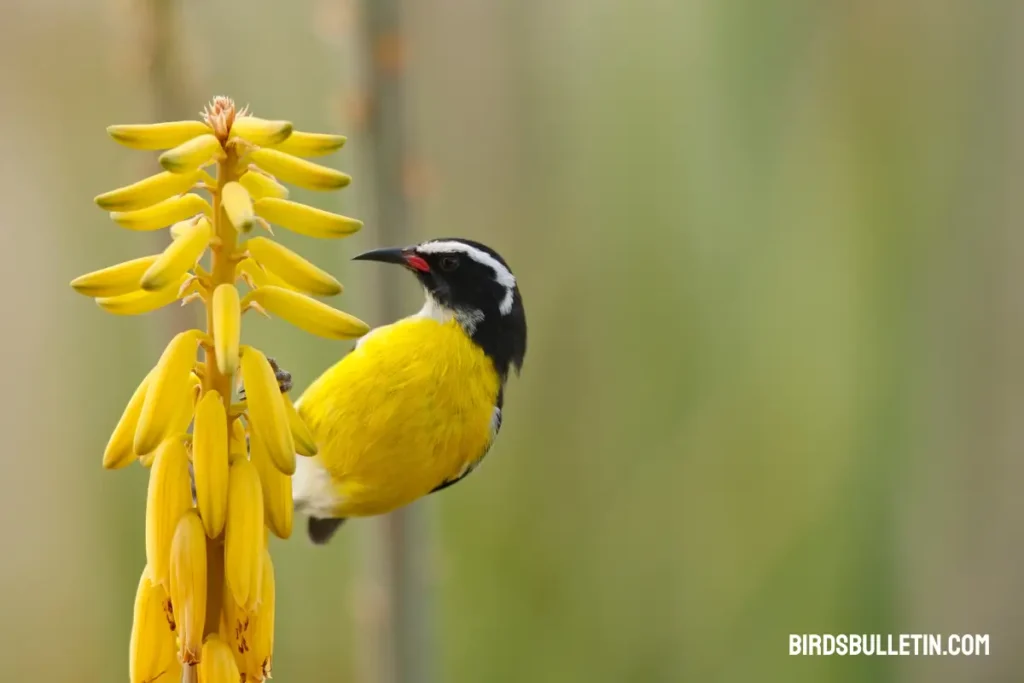
In a single day, an individual makes an estimated 1,500 flower visits and spends up to 44 percent of daylight hours feeding. They rapidly build fat reserves to survive night hours when many blooms close nectar access.
What Time of Day does Bananaquits Feed?
Bananaquits begin feeding shortly after dawn and continue at frequent intervals until dusk. Peak foraging occurs mid-morning through the afternoon when temperatures are warmest and many flowers bloom with fresh nectar. They feed most actively from 9 am-3 pm. If overnighting during migration, they also feed heavily near dusk to boost energy stores.
How Bananaquits Gather Food?
Bananaquits utilize some remarkably acrobatic maneuvers while foraging:
01. Nectar Feeding: One of the primary foraging methods of Bananaquits involves nectar feeding. Their slender, slightly curved bills are adapted for sipping nectar from flowers.
02. Hovering: Bananaquits are skilled at hovering, a technique commonly observed when they feed on nectar. By rapidly flapping their wings, they can suspend themselves in mid-air.
03. Gleaning Insects: These birds actively glean insects from various surfaces, including leaves, branches, and even the air. Bananaquits have agile and precise movements, allowing them to capture insects such as beetles, spiders, and caterpillars from the vegetation in their environment.
04. Mid-Air Insect Capture: Bananaquits are capable of catching insects while in flight. Their nimble aerial maneuvers enable them to snatch flying insects, showcasing their adaptability in hunting on the wing.
05. Fruit Foraging: In addition to nectar and insects, Bananaquits include fruits in their diet. They forage for ripe fruits in trees and shrubs, using their bills to pluck or peck at the fruits.
06. Pollen Feeding: Bananaquits have been observed feeding on pollen, especially in association with nectar feeding. While nectarine, they incidentally come into contact with pollen, and some Bananaquits actively consume pollen grains.
07. Seed Feeding (Occasional): While not a primary food source, Bananaquits are known to consume seeds occasionally. This may involve picking seeds directly from plants or foraging for seeds on the ground. Seeds are not as prevalent in their diet as nectar and insects.
Bananaquits’ foraging techniques demonstrate their ability to exploit a variety of food resources within their tropical habitats.
What Do Bananaquits Eat in Winter?
As year-round residents of tropical habitats, bananaquits enjoy consistently abundant food availability through all seasons.
Their winter diet is identical to spring and summer, revolving around nectar supplemented liberally by insects, spiders, and occasional fruit snacks. Rainy winters may slightly limit nectar access but insect abundance remains adequate.
What Do Baby Bananaquits Eat?
Adults feed chicks regurgitated nectar and mashed insects, with the proportion of sugary food decreasing and protein content increasing as nestlings age over two weeks’ development.
As chicks near fledging around 13-15 days old, parents offer more intact insects and spiders to hone offspring’s foraging skills. Fledglings initially beg for food from their parents but quickly become adept hunters.
Frequently Asked Questions
01. Do Bananaquits play a role in pollination?
Yes, Bananaquits, while feeding on nectar, inadvertently contribute to pollination by transferring pollen between flowers.
02. How many banana blossoms do they pollinate?
Ironically bananaquits rarely pollinate banana plants! They rob nectar by slitting the bases of flowers but do effectively pollinate some Heliconia species.
03. What is their daily nectar intake?
One study showed an average dry-weight sugar intake of 0.6 grams per day. To power their fast metabolism, they might visit 1,500 flowers daily!
04. Can Bananaquits feed on artificial nectar feeders?
Yes, Bananaquits are known to visit artificial nectar feeders, especially in urban or suburban areas where such feeders are available.
Final Thoughts
With boundless energy powered by a sugar-fueled metabolism, the colorful bananaquit fills an important niche as a nectar robber and pollinator across the American tropics and subtropics.
An incredibly versatile forager, it zigzags acrobatically from flower to flower supplemented by spiders and insects extracted from foliage. The charismatic bananaquit continues flourishing across its range.
References
- Bleiweiss, R. (1998). Origin of hummingbird faunas. Biological Journal of the Linnean Society, 65(1), 77-97.
- Paton, D. C., & Collins, B. G. (1989). Bills and tongues of nectar-feeding birds: A review of morphology, function, and performance, with intercontinental comparisons. Australian Journal of Ecology, 14(4), 473-506.
- Wunderle, J. M. (1999). Avian resource use in Dominican shade coffee plantations. The Wilson Bulletin, 271-281.


